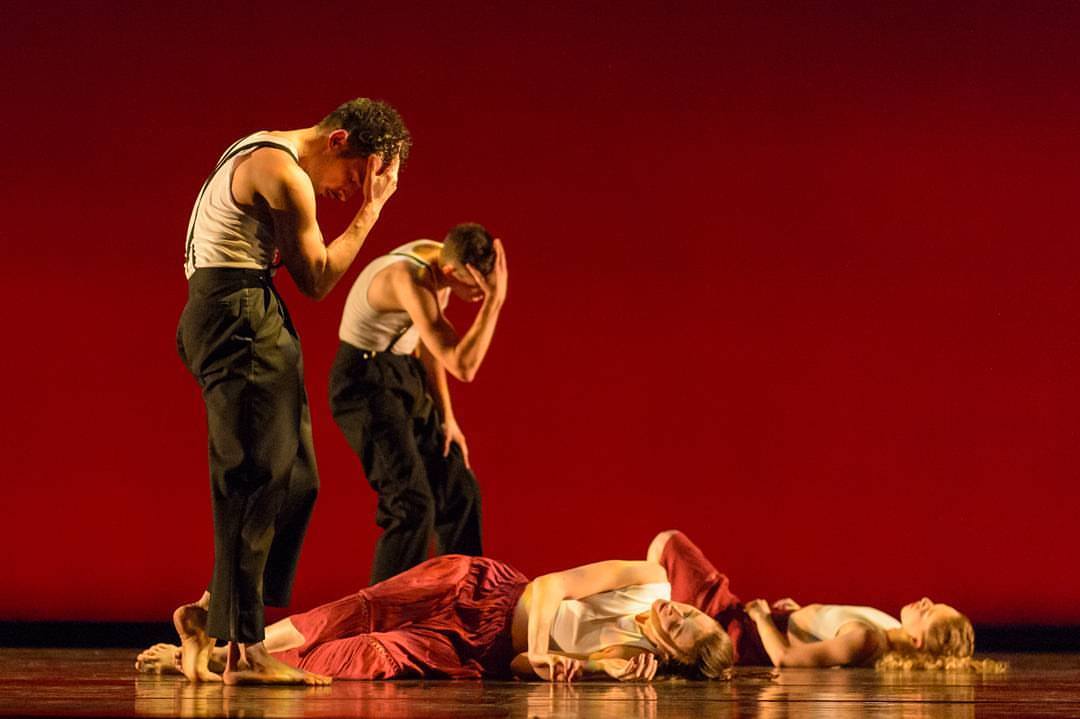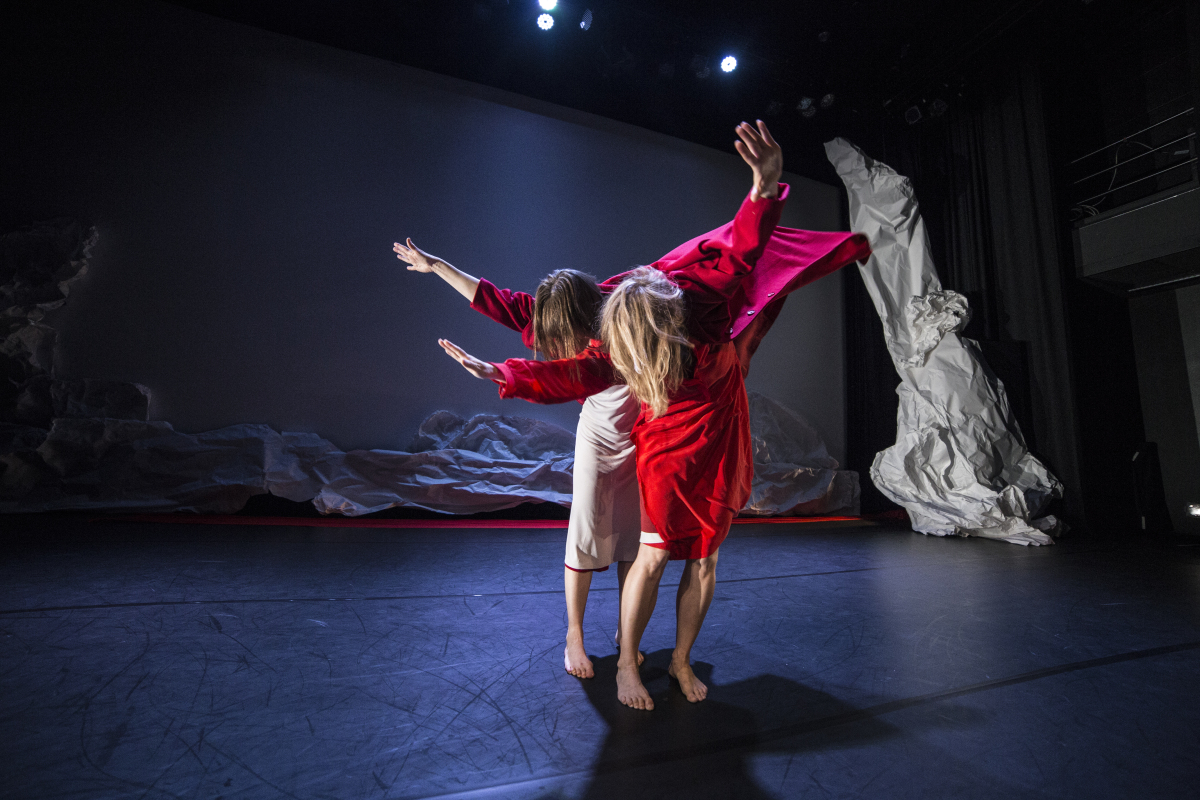“When you have fire, that’s where you are,” she said as she rubbed ash across dancer Efren Corado Garcia’s face. The other dancers followed suit, rubbing the ashes from campfires grown cold across their faces and hands.
Poignant words from Ida Yellowman, one of the three Navajo guides who led the artists of Repertory Dance Theatre, guest choreographer Zvi Gotheiner, and ZviDance on a pilgrimage to Bears Ears National Monument in San Juan County, Utah. Marty Buhler’s documentary of their five-day journey began Repertory Dance Theatre’s Sanctuary program, contextualizing the 30+ minute work, “Dancing the Bears Ears," the group built from this experience.
“Dancing the Bears Ears” opened with eight RDT dancers slapping knees and head, two lines of four, weaving in between each other in unison, turning in one breath, energizing the Rose Wagner stage. The collected energy of their stomps highlighted the projections of small spaces from the Bears Ears -- a purple flower here, a range of colorful dirt there.
The ensemble dissembled into a series of duets, where small moments of tender intimacy echoed the small spaces projected. Ursula Perry and Corado Garcia arching underneath each other’s circled arms, she lifts and turns him around. Justin Bass and Lauren Curley lying legs tangled on the ground, she gently rubs the back of his neck, a touch as intimate as the rubbing of ashes onto a dancer’s face.
Returning anew to the rhythmic opening, the dance seems to begin again. This recurring beginning marks this as a dance of hope, the kind of hope that (to quote environmental educator David Orr) “is a verb with its sleeves rolled up.” By that I mean not a naive optimism that all will be well with the land, or a desperate cynicism about the wilderness that is slipping away in front of our eyes, but rather an engaged and recurring plea for the protection of this place for all who consider it sacred, and returning to the daily act of advocating for the land.
As the dancers took their bow, they gathered together in the center of the stage, arms around each other. There was a finality to the bow, a sense of complete giving and abandon to the energy of sharing their transformative experiences at Bears Ears with us.
Efren Corado Garcia in Eric Handman's "Ghost Ship." Photo by Sharon Kain.
After intermission, Eric Handman’s “Ghost Ship” led the second half of the evening. This 2007 work was re-staged on six of the eight RDT dancers, who huddled on stage right, moving across to stage left in syncopated build -- climax -- dissolve duets. Less stylized than more recent works of Handman’s that I have seen, the recurring arabesque lines and tight duet unison created a sense of remembering without nostalgia, and history without pain. The piece concludes with a shower of 250 pounds of rice on stage right, the patter of it on the stage satisfyingly never-ending.
RDT and Utah Valley University students in "Tower" by Andy Noble. Photo by Sharon Kain.
Andy Noble’s “Tower” (2015), featuring 27 guest performers from Utah Valley University, concluded the evening. Evoking military images, the ensemble goose-stepped and chassé-ed on, across, and off the stage. The UVU artists’ command of ballet and jazz techniques supported Noble’s competition dance aesthetic. Also notable: their commitment to the stage presence required for the work, such as when the house lights went up and a group of dancers slid towards the front of the stage, aggressively waving their arms in the faces of the first row of the audience. I struggled to connect the army-inspired images and content of the work to the evening’s theme, begging the question of what makes an ‘environmental piece’.
While leaving the concert with a heart full of beautiful and engaging dancing, I stumbled into one of my students, who had, for the first time, paid for a ticket to a dance concert specifically to see "Dancing the Bears Ears." Confused, she and her brother had left the show at intermission, certain that the evening was over. I must admit that I shared that sense of finality at intermission. While the later works of the evening were also interesting and important, I felt satiated after seeing "Dancing the Bears Ears," and would have preferred to have gone on with my evening with its hopeful dancing strongly in my mind’s eye.
Liz Ivkovich is in a relationship with the loveDANCEmore performance journal (it’s complicated), works in sustainability communication and development for the U of U, and adjuncts at SLCC.











